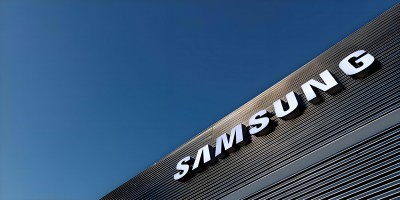On September 23, according to the first financial report, Vietnam's Bac Ninh province signed an investment memorandum of understanding worth $1.8 billion (about 12.7 billion yuan) with Samsung Display Company. The investment aims to establish a downstream production base for 8.6-generation OLED panels for IT equipment and in-vehicle applications.
Last year, Samsung started the construction of 8.6-generation OLED panel production line in South Korea. As a companion to this upstream project, Samsung now plans to further expand its production chain in Vietnam to meet the growing market demand. At present, the world's main OLED panel production line is concentrated in the 6th generation line, but Chinese and South Korean companies are actively layout 8.6 generation line, trying to achieve a leading position in this field. In addition to Samsung, China's boe and Visigna are also promoting 8.6-generation OLED panel production line projects in Chengdu and Hefei, respectively. With Samsung's new investment in Vietnam, it is expected that the industrial chains of South Korea and Vietnam will form more direct competition with China in the future.
Samsung continues to expand its investment in Vietnam
Wu Rongbing, chief analyst at Omdia, told CBN that Samsung continues to adopt a strategy of investing in Vietnam. Yang Shucheng, secretary-general of the China-India-Vietnam Electronics (mobile phone) Enterprise Association, believes that Samsung is increasing its investment in Vietnam, with the goal of building a more complete industrial chain system in the local area.
As early as September 12, there was news that Samsung Display is cooperating with Vietnam Bac Ninh province to carry out a new investment project, at that time only mentioned the 8.6 generation OLED panel downstream OLED module for IT. Yang pointed out that with the formal signing of this investment memorandum of understanding, Samsung Display's new project in Vietnam is likely to include the production plan of OLED modules for cars.
Since entering Vietnam's Bac Ninh province in 2014, Samsung has invested a cumulative $6.5 billion in the region. With this new $1.8 billion investment, the total investment will reach $8.3 billion (about 58.5 billion yuan). Samsung Display's factory in Bac Ninh focuses on the production of small and medium-sized OLED display modules for customers such as Samsung Electronics and Apple, and will also add a foldable panel production line in 2022.
At present, Vietnam has become one of the main production bases of Samsung Electronics and its subsidiary Samsung Display in Asia. Samsung Electronics has several production facilities in Vietnam, including Bac Ninh Production Company, Thai Nguyen Production Company and home appliance complex plant in Ho Chi Minh City.
According to the information provided by the company, Tianjin Samsung Vision Mobile Co., Ltd. is mainly engaged in the design, production and sales of mobile communication display devices and other electronic products display devices, and provides related technical consulting services; Dongguan Samsung Vision Co., Ltd. focuses on the production and sales of new display devices, especially flat panel displays and OLED flat panel displays.
Competition between China and South Korea intensifies in the medium-size OLED market
From the perspective of the entire display industry, medium-size OLED panels have become a new focus of competition between Chinese and South Korean companies. In addition to Samsung's construction of 8.6-generation OLED production lines in South Korea, Chinese companies such as BOE and Visigna are also stepping up their efforts to build high-value-added OLED panel production lines in Chengdu and Hefei for mid-size IT and vehicle applications, respectively.
Boe revealed in the investor relations event on August 28 that the OLED panel shipment target in 2024 is 160 million pieces, and stressed that in order to achieve profitability, there must be a breakthrough in product layout and high-end. Boe is confident in its investment in the 8.6-generation OLED production line and hopes to ensure a virtuous cycle of business through technological innovation and efficient operation. At the same time, BOE also plans to promote the application of flexible OLED displays in the automotive field. With the increasingly obvious OLED trend of IT high-end products, BOE is trying to seize this opportunity.
Vicinosa also announced on August 29 that it will invest 55 billion yuan in Hefei to build 8.6 generation OLED production lines. With the steady expansion of OLED in the global market, the applications from smartphones to tablets, laptops and even car displays are becoming more and more widespread, Vicina said. Omdia predicts that between 2023 and 2028, the shipment of OLED panels for IT products will grow at an annual rate of 56%, while the compound annual growth rate of OLED panels for automotive displays will reach 49%, which indicates that OLED's share in the mid-size incremental market will be further improved.
Since Samsung Display sold its Suzhou 8.5-generation LCD panel production line to TCL Huaxing in 2020, the company has shifted its focus to the OLED field. Faced with the dominant position of mainland Chinese companies in the LCD panel market and the rapid rise of OLED panels, Samsung hopes to open the gap with Chinese companies by increasing investment in medium-size OLED.
* Disclaimer: This article is from the Internet, if there is any dispute, please contact customer service.



